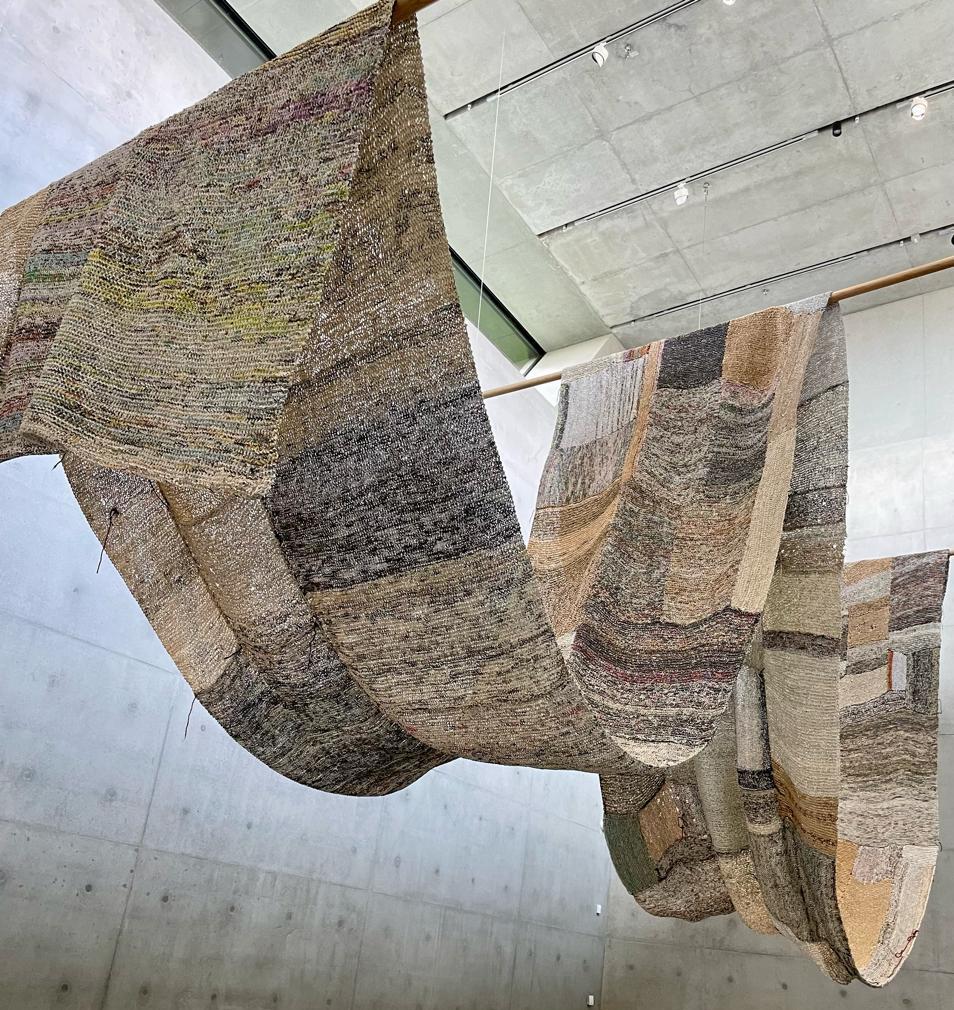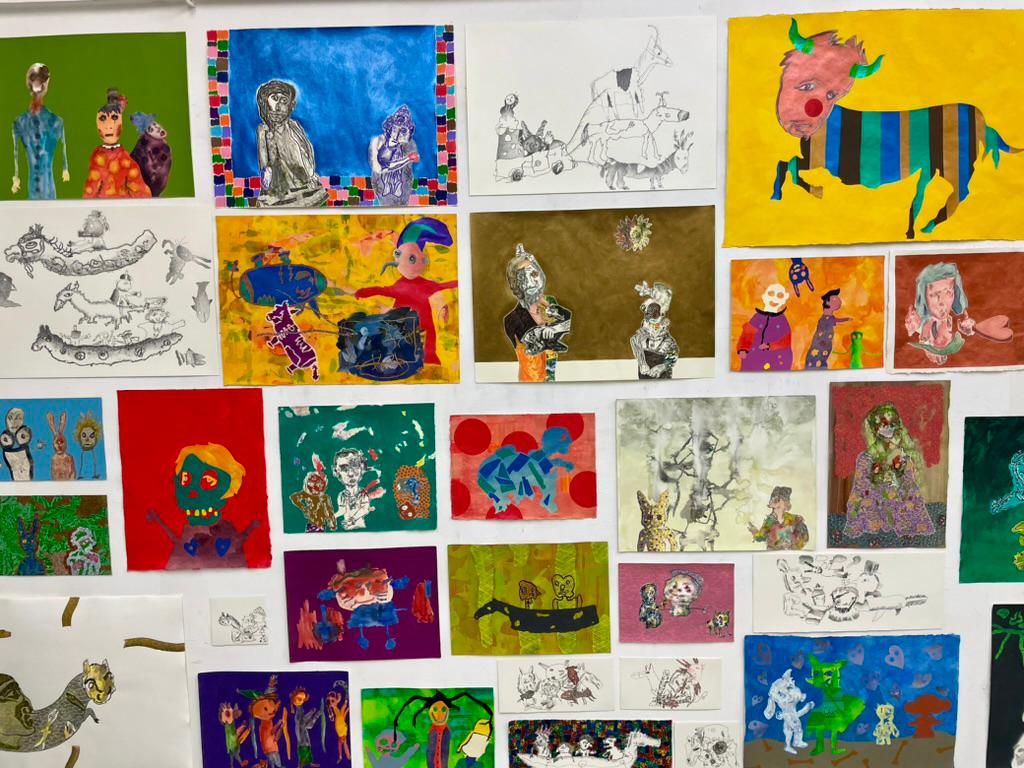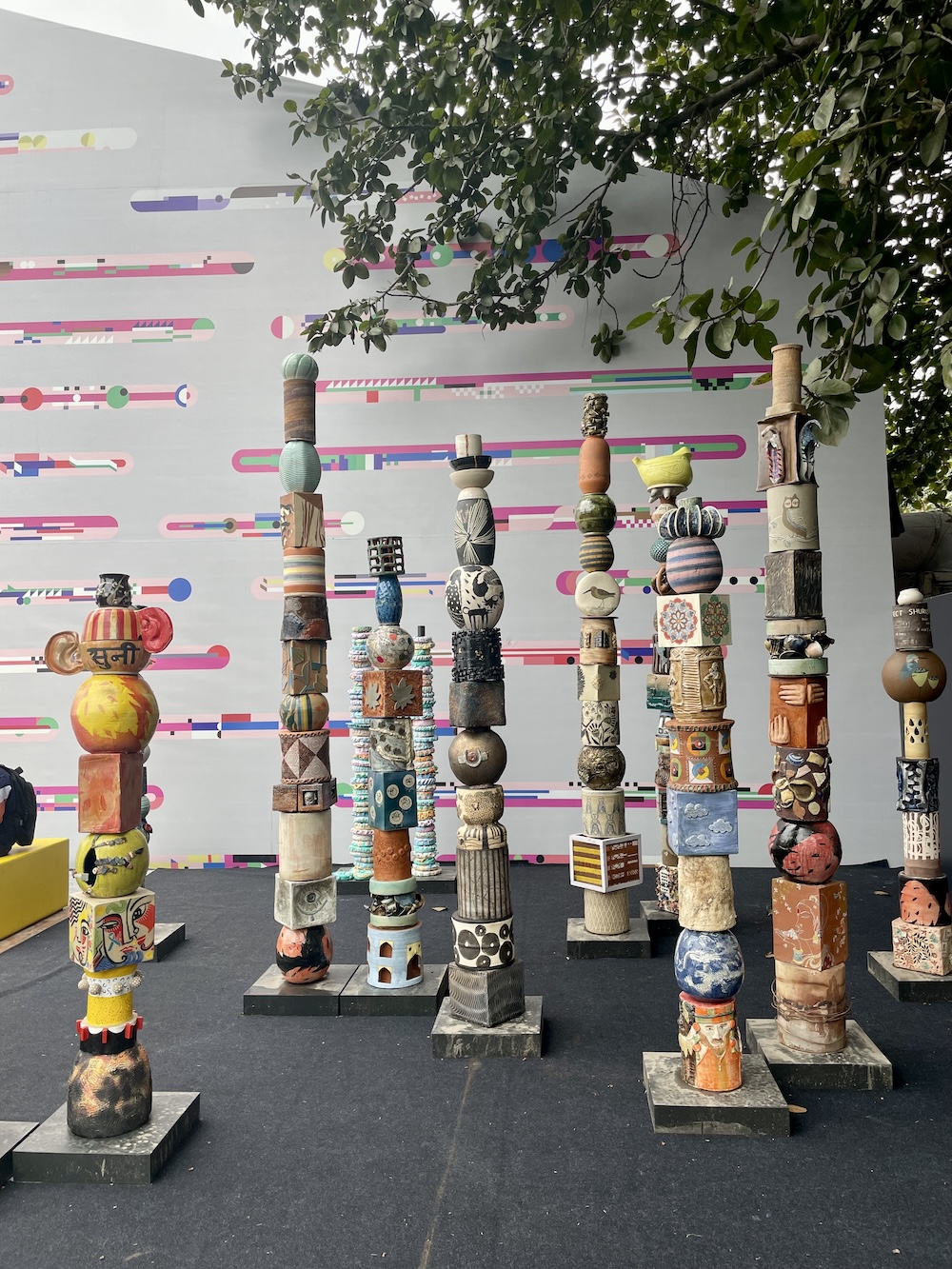It is not easy to put the feeling into words that overwhelms one at 9 am, cruising down the Canale Grande in a Vaporetto and seeing the same lights and reflections that inspired masters like Titian and Canaletto.
Venice is a city that breathes art like air through its canals and small alleyways. Then, every other street, one passes a Palazzo that is part of the uber-exhibition that is the Biennale. Like a door to another land, the palazzi show their stuccoed façade before opening up in baroque chambers with empire furniture. It is hard not to get lost in the conundrum of Acanthus and frescoes that seam every staircase.
But the art of the centuries is contrasted with artists very much alive. For example, the Future Generation Art Prize that is supported by the Pinchuk Art Centre. Among many significant discoveries, the artist Firelei Baez is one that is melting history and contemporary. She grapples with the often overlooked history of the Caribbean. In this artwork called „given the ground ( the fact that it amazes me does not mean I relinquish it)“, she combines the proud Caribbean women with Rococo stucco.
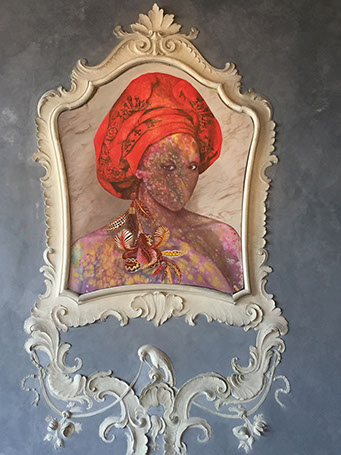
Then, going to the next exhibition via the Canal Grande, one passes, quasi en passant, two more monumental artworks: Lorenzo Quinn’s „Support“ and James Lee Byar’s „Golden Tower“. Whereas Lorenzo Quinn is alluding to the fact that Venice’s prestigious architecture is slowly sinking back into the Laguna, Byar’s tower seems just to be standing there, shimmering in the Italian sun
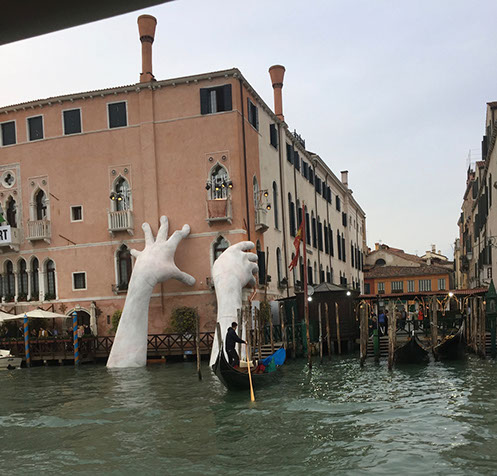
Arriving at the Arsenale, a part of the Biennale, one quickly gets an impression of Christine Macel’s vision for the main exhibition. Unlike Okwui Enwezor two years ago, her curatorial emphases lies more on textile art, mystic and giving room for the artists.
The artist Lee Mingwei, for example, fixes broken clothing with threads coming from a myriad of spools attached to the wall.

A couple of rooms further into the exhibition, the Brazilian artist Ernesto Neto created, together with a tribe of Amazonian Indigenous, a sacred place. Visored by an organic net and accompanied by soft drumming, visitors can take a pause from the trouble around them and find their inner spirits.
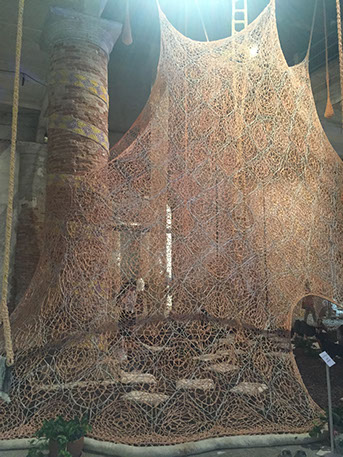
At the end of the room, Sheila Hicks created a whole wall with her signature balls of wool in lively colors. Although it looks like another opportunity to kick back, this time the visits cannot take advantage of the cozy artwork.
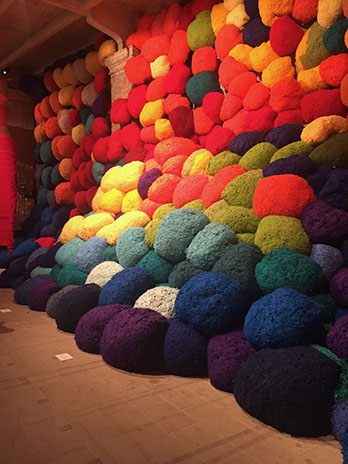
After the arsenale, it was time to visit the pavilions in the Giardini. Each one curated individually to show an artist who is connected to the country in a way. South Africa sends a strong message by telling the stories of refugees in Candice Breitz’s „love story“ as well as in Mohau Modisakeng’s artwork „passage“.
The German pavilion is this Biennales hotspot. A long cue in front of the entrance hints at the curiosity of the people to view Anne Imhofs existential „Faust“ performance. Young adults, dressed like Bergheim-Ravers are running around, screaming, crawling under the glass floor or singing on a pedestal. Many spectators seem mesmerized by the strange mixture of performance and chaos.
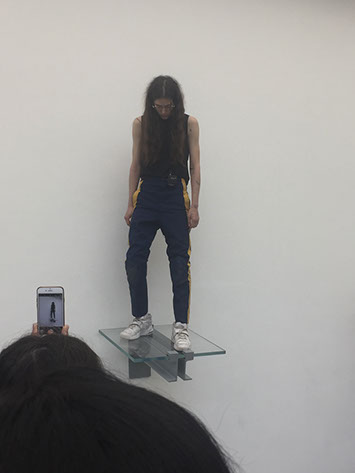
Right next to this spectacle is the French pavilion, another highlight according to many critics. The artist Xavier Veilhan furnished a recording studio where musicians can record tracks during the Biennale. Adding, like Christine Marcel, space for creative people to find shelter and room to express oneself.

It is with tired legs and weary eyes that one leaves this cornucopia of art and sails back to the train station of Ferrovia. But also happy, knowing that this day gave food for the taught for the weeks to come.

